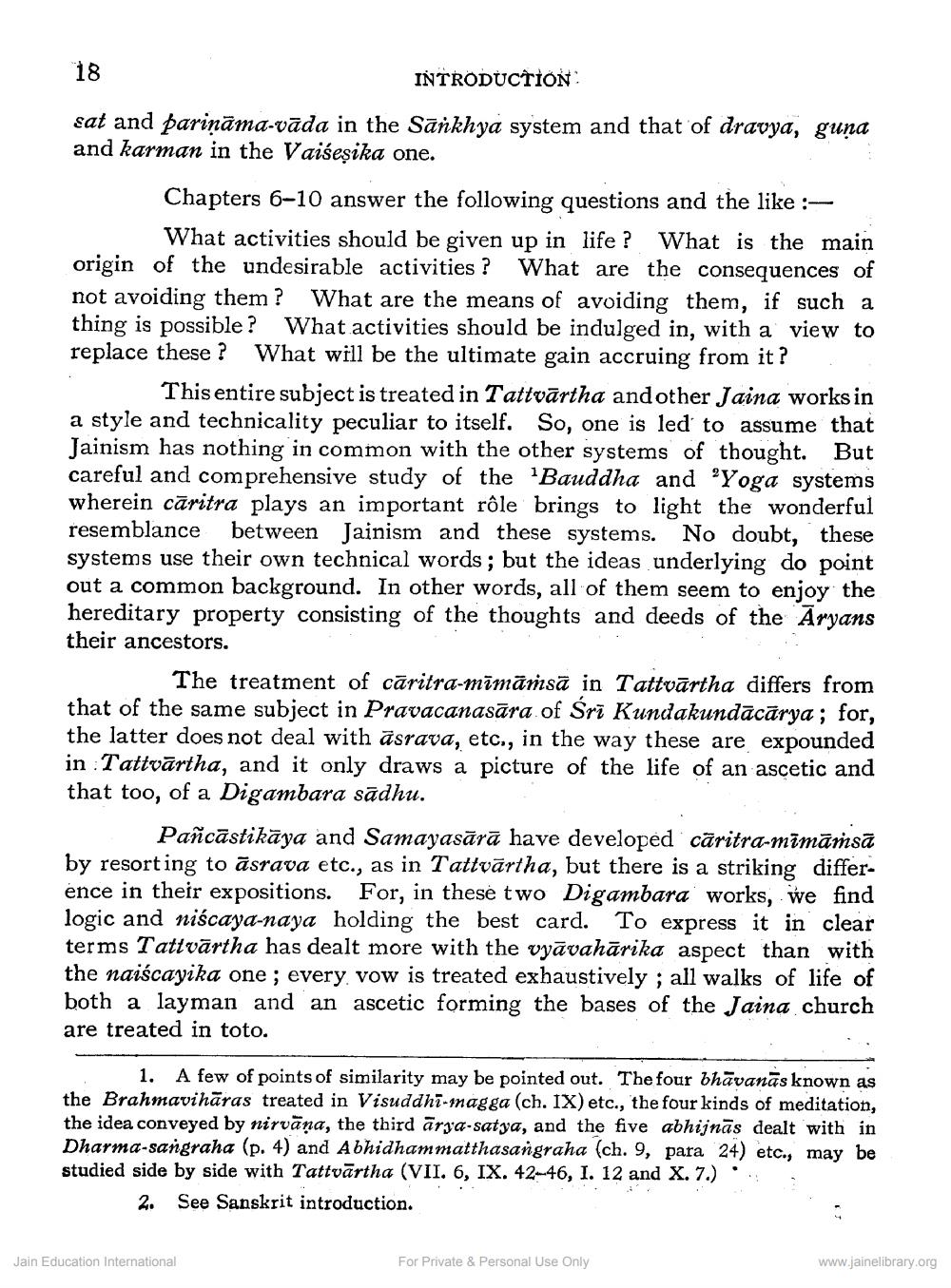________________
18
INTRODUCTION
sat and pariņāma-vāda in the Sankhya system and that of dravya, guna and karman in the Vaisesika one.
Chapters 6-10 answer the following questions and the like :
What activities should be given up in life? What is the main origin of the undesirable activities? What are the consequences of not avoiding them? What are the means of avoiding them, if such a thing is possible? What activities should be indulged in, with a view to replace these? What will be the ultimate gain accruing from it?
This entire subject is treated in Tattvārtha and other Jaina works in a style and technicality peculiar to itself. So, one is led to assume that Jainism has nothing in common with the other systems of thought. But careful and comprehensive study of the Bauddha and 'Yoga systems wherein cāritra plays an important rôle brings to light the wonderful resemblance between Jainism and these systems. No doubt, these systems use their own technical words; but the ideas underlying do point out a common background. In other words, all of them seem to enjoy the hereditary property consisting of the thoughts and deeds of the Aryans their ancestors.
The treatment of cāritra-mīmāṁsā in Tattvārtha differs from that of the same subject in Pravacanasāra of Sri Kundakundācārya ; for, the latter does not deal with āsrava, etc., in the way these are expounded in Tattvārtha, and it only draws a picture of the life of a that too, of a Digambara sādhu.
Pañcāstikāya and Samayasārā have developed caritra-mimāṁsā by resorting to īsrava etc., as in Tattvārtha, but there is a striking difference in their expositions. For, in these two Digambara works, we find logic and niscaya-naya holding the best card. To express it in clear terms Tattvārtha has dealt more with the vyāvahārika aspect than with the naiścayika one; every vow is treated exhaustively; all walks of life of both a layman and an ascetic forming the bases of the Jaina church are treated in toto.
1. A few of points of similarity may be pointed out. The four bhāvanās known as the Brahmavihāras treated in Visuddhi-magga (ch. IX) etc., the four kinds of meditation, the idea conveyed by nirvana, the third ārza-satya, and the five abhijnās dealt with in Dharma-sangraha (p. 4) and Abhidhammatthasangraha (ch. 9, para 24) etc., may be studied side by side with Tattvārtha (VII. 6, IX. 42-46, I. 12 and X. 7.) .
2. See Sanskrit introduction.
Jain Education International
For Private & Personal Use Only
www.jainelibrary.org




